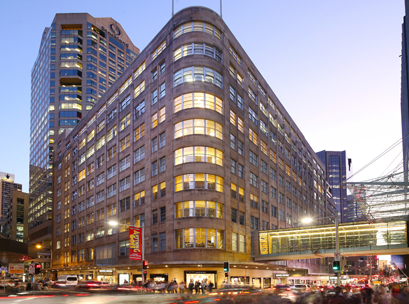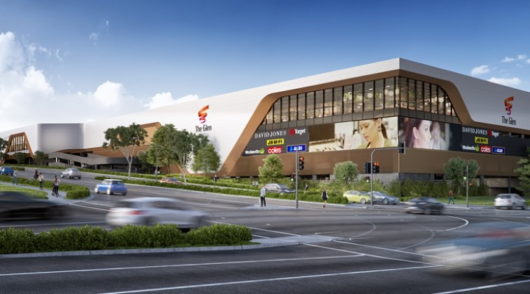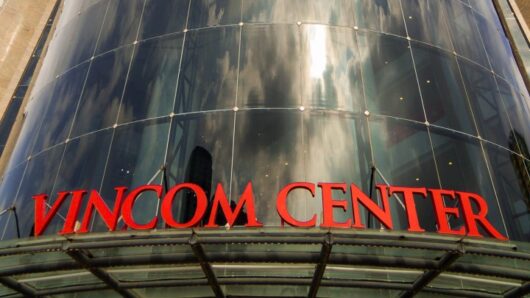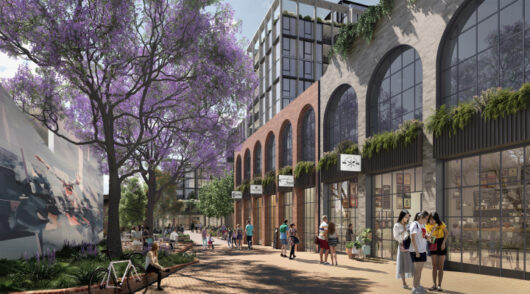 Despite short-term pain caused by the ‘pedestrianisation’ of George Street and increasing vacancy rates, the outlook is positive for Sydney’s retail market, according to research from Knight Frank.
Despite short-term pain caused by the ‘pedestrianisation’ of George Street and increasing vacancy rates, the outlook is positive for Sydney’s retail market, according to research from Knight Frank.
In its latest reports, the property firm said current economic conditions and low consumer confidence levels have seen vacancy levels in the Sydney prime CBD retail core rise in the 12 months to July 2017, increasing from 1.8 per cent to 2.6 per cent. Shopping centre vacancy levels remained steady at 2.3 per cent in the 12 months to July 2017.
According to Knight Frank, the most notable movements included Tiffany & Co occupying space in Westfield, along with Swarovski moving into the ex Lovisa space in MidCity Centre. In March, DEXUS Property Group announced that it had lodged a development application for a new Tiffany & Co. flagship store at 175 Pitt Street, in the Sydney CBD, activating a city retail development opportunity in the property group’s portfolio.
At the time, Pamela Medich, DEXUS’ leasing manager for city retail told IRW that the luxury core in the Sydney CBD has undergone a transformation over recent years as more international brands arrive.
“The luxury core has expanded from only Castlereagh Street a few years ago to today taking in George, King and Pitt Streets,” she said.
According to Amanda Pieriboni, head of city retail developments for DEXUS, on any given day, over 600,000 visitors entered the city to “shop, be entertained or work, and Sydney enjoys over nine million visitors a year with visitor growth in recent times largely from Asia, particularly China, India and Korea”.
Meanwhile, the NSW Government is currently engaged in an extensive program of infrastructure works across the Sydney city, particularly the ‘pedestrianisation’ of George Street, to be completed by 2020.
Knight Frank’s leasing executive for retail leasing in NSW, Adam Tyler, said while light rail construction is causing disruption to retailers in the short term, the outlook for George Street is strong.
“The light rail will contribute to the future rejuvenation of George Street with many retailers using this opportunity to secure prime positions in the soon to be pedestrianised precinct.”
New developments on George Street will add approximately 8,000 sqm of new prime retail space to the market. The $75 million redevelopment of ISPT George Place will add approximately 3,000 sqm, while the Fife capital development at York and George will add a further 5,000 sqm.
Knight Frank’s research analyst, NSW, Marco Mascitelli said the rise in vacancy levels presents an opportunity for new retailers to enter the market.
“With large clothing retailers like Marcs, David Lawrence, Kit & Ace and soon Gap Australia ceasing operations, vacancies in tightly held areas of Pitt Street, Park Street and Martin Place have opened up, allowing new entrants to penetrate some of the most sought-after retail strips in Australia.”
The rise in vacancy rates was underpinned by strong competition in the market from large international retailers and the continuing growth in ecommerce trade. Well-known brands including Topshop, Kit & Ace, Payless Shoes, Rhodes & Beckett, Herringbone, Marcs, David Lawrence and non-fashion retailers including Dick Smith ceased operations or entered into administration.
Clothing still on top, rents still high
Clothing, footwear and soft goods represented 39.1 per cent of the retail tenancy mix in the CBD, remaining constant over the previous 12 months. Shopping centres accounted for the majority share of clothing, footwear and software goods with 50.1 per cent, slightly down from the previous corresponding period.
Last month, Retail Prodigy Group opened the doors to a three-level Nike flagship store on George Street. Brant Hirst, Nike marketing director told IRW that the vast amount of construction works currently underway in the Sydney CBD had not been a concern in the development of the new George Street location.
“The heritage facade and multiple levels of the building provided the perfect canvas for a premium shopping experience for our customers,” he said. “Having a high street store in an emerging shopping precinct was also a major drawcard of the space.”
Nike has joined the likes of global clothing retailers Burberry and Louis Vuitton at the lower end of George Street as a retail destination on the back of the Sydney Light Rail project.
Food retailers have the second largest presence within the Sydney CBD retail core at 17.8 per cent, underpinned by shopping centres where the representation jumps to 25.3 per cent. Despite the softening vacancy and stronger presence of international retailers, luxury retailers and banks, gross rental rates have remained steady in the 12 months to July 2017.
Pitt Street Mall still remains the standout super prime retail core with gross rents ranging between $10,000/sqm and $20,000/sqm. Retail space outside Pitt Street (George Street and Castlereagh Street precincts), remain unchanged averaging between $5,000/sqm and $7,000/sqm.
More recently, amid the light rail construction and numerous retail redevelopments along George Street, Superdry and Michael Hill will also be opening stores along George Street. The future of Topshop at Market Street is still yet to be determined as it currently sits in voluntary administration.
In July, CBRE said over 50 luxury and premium international brands were looking at expansion in the Australian market, with brands increasingly “looking to George Street for expansion rather than Pitt Street Mall, as this will provide consumers with a much greater selection of retailers on the new George Street pedestrian boulevard”.
Way out west
Meanwhile in Sydney’s west, Knight Frank said the Parramatta’s CBD will transform into a major retail destination in coming years, supported by strong population and employment growth combined with significant levels of urban gentrification and infrastructure investment.
“The Parramatta CBD is experiencing a massive development boom, with over 21 DA endorsed mixed-use developments in the pipeline,” said Knight Frank’s senior research manager, NSW, Alex Pham. According to the City of Parramatta, upcoming projects could yield nearly 9,200 additional dwellings and about 170,000 sqm additional commercial floor space.
The retail vacancy rate in the Parramatta CBD retail core measured 2.8 per cent as at July 2017, marginally higher than that in the Sydney CBD at 2.6 per cent. Arcades and laneway shops registered the highest percentage of vacancy at 6.3 per cent, while the lowest vacancy rate was recorded for the shopping centre category at 1.4 per cent.
“As Sydney’s population grows, there’s an increased need for an alternative retail and entertainment hub outside of Sydney’s CBD, and Parramatta will fill this gap. The Powerhouse Museum relocating to Parramatta is a testament to Sydney’s Western expansion,” said Pham.
“Currently dominated by food outlets, we expect the tenant profile in Parramatta to change over the coming years as a larger variety of fashion, footwear and technology retailers take up space in the Parramatta Square development. With the Parramatta light rail linking surrounding suburbs, Parramatta will become a more attractive retail destination for Western Sydney residents.”
Food retailing was the most dominant retail category in Parramatta as at July 2017, accounting for 27 per cent of the total tenancy mix. The majority of food retailers were street-front takeaway shops, restaurants and cafes, which accounted for 82 per cent of the total number of food retailers in Parramatta. Clothing and footwear retailers had the second largest presence in the city, representing 19 per cent of the total retail units.
According to the City of Parramatta Council, Western Sydney’s population is expected to expand by 50 per cent to three million residents over the next 20 years. The city’s economy currently generates $23.8 billion per year and is forecast to expand by 4.6 per cent pa through to 2021. A total $10 billion will be invested in infrastructure projects across Western Sydney over the next five years.
Access exclusive analysis, locked news and reports with Inside Retail Weekly. Subscribe today and get our premium print publication delivered to your door every week.





